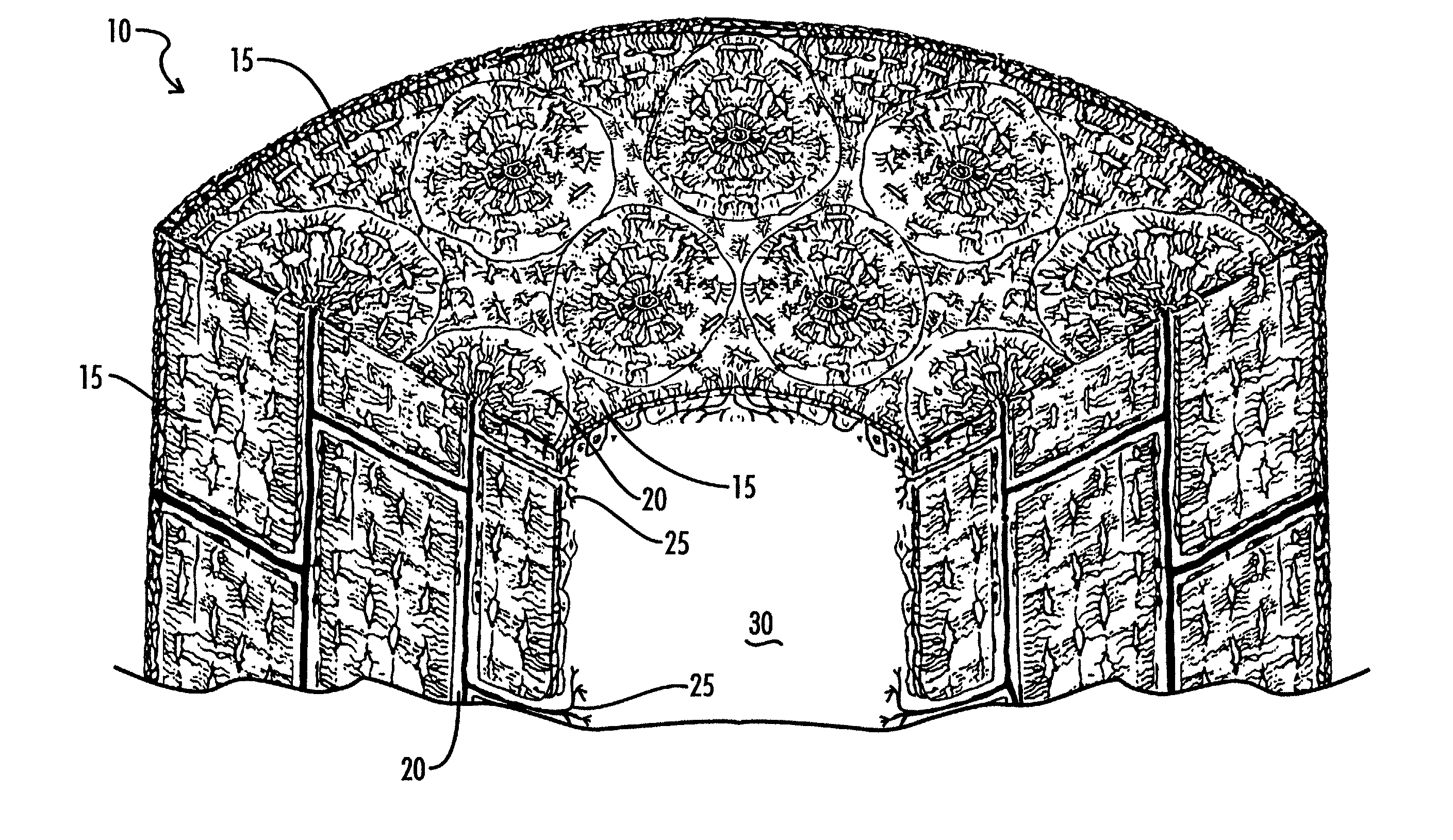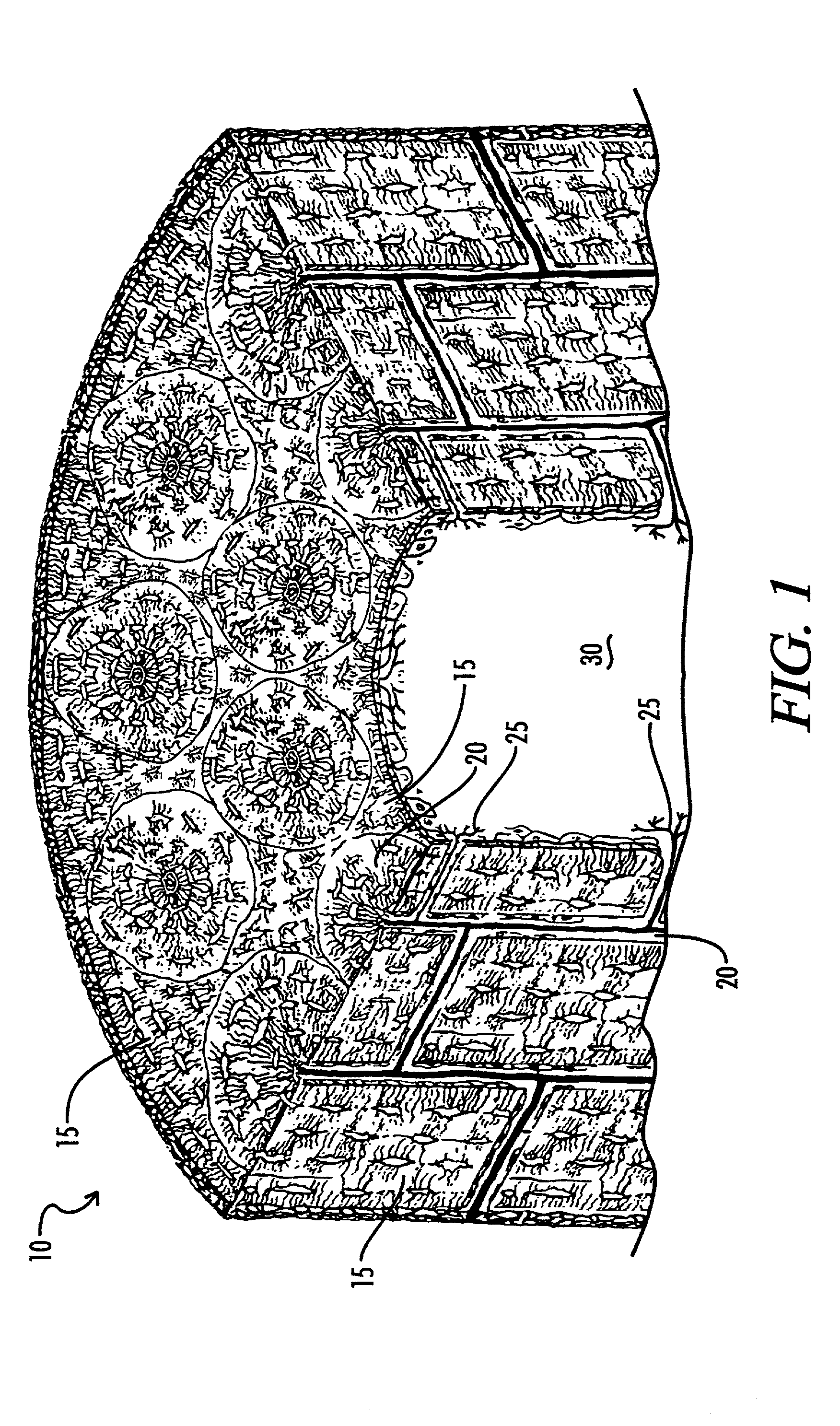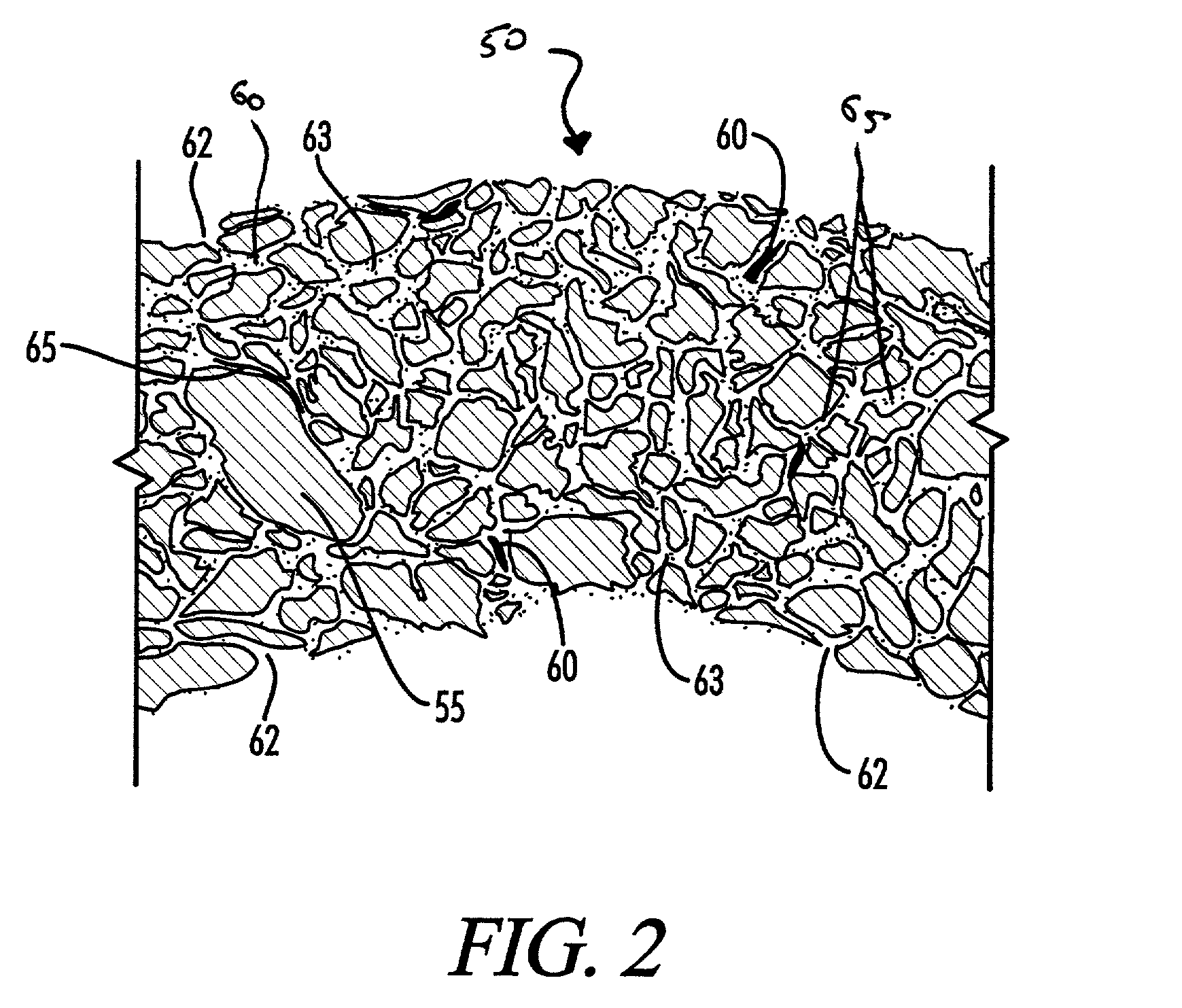Method of forming a composite bone material implant
a bone material and composite technology, applied in the field of bone composite implants, can solve the problems of difficult to achieve this goal, affecting the quality of bone tissue, and requiring the discarding of a great deal of scrap and powdered bone material,
- Summary
- Abstract
- Description
- Claims
- Application Information
AI Technical Summary
Benefits of technology
Problems solved by technology
Method used
Image
Examples
example 1
[0121]This example shows a process of making a tubular or cylindrical composite with a 2 cm OD (outside diameter) and 1.4 cm ID (inside diameter) by 2 cm in length, and 3 mm wall.
[0122]Cortical human bone is cleaned and ground into particles varying in size from 125 microns to 850 microns. The ground bone is demineralized, providing deminieralized bone matrix (DBM).
[0123]2.00 gms is measured, then hydrated with sterile water to a weight of 2.558 gms (0.558H2O). The weighed DBM is then inserted into the cylindrical cavity of a Teflon® mold and manually compacted with a force of 0.5 pounds. One (1) cc of special blended N Butyl Cyanoacrylate (CA) is then injected with a #18 gauge needle into the DBM at the outer edge of the cylindrical shape, and at the same time a vacuum of 28″ hg is applied from the bottom end of mold. Two (2) cc of same N Butyl Cyanoacrylate is then injected with a #18 gauge needle into the center core of the Teflon mold. The total weight of the bone composite is n...
example 2
[0125]Example 1 was repeated, to obtain the samples discussed below.
[0126]The densities of the samples were measured using physical density estimates and the water displacement method. Physical estimates measures a volume based upon physical measurement of the sample dimensions (height×width) and the dry weight of the sample. In this example, the samples were prepared by drying the sample in an oven at 110 C overnight. In the Water displacement method (ASTM D-792) the volume of water displaced is measured and the weight of the sample after drying is measured.
[0127]Density estimates based upon these two methods for five ART samples is presented in Table 1.
[0128]
TABLE 1Measured DensityWaterDisplacementdensity estimate,Physical Density Estimate,Sample IDgms / ccgms / ccHuman-1-A1.121.121.00Human-1-B0.960.980.86Rabbit-30.961.070.96Rabbit-41.091.070.83Rabbit-51.071.070.91Mean1.041.0620.9121.051
[0129]The weight loss on drying is presented in Table 2. The weight loss on drying is a combination...
PUM
| Property | Measurement | Unit |
|---|---|---|
| Length | aaaaa | aaaaa |
| Length | aaaaa | aaaaa |
| Fraction | aaaaa | aaaaa |
Abstract
Description
Claims
Application Information
 Login to View More
Login to View More - R&D
- Intellectual Property
- Life Sciences
- Materials
- Tech Scout
- Unparalleled Data Quality
- Higher Quality Content
- 60% Fewer Hallucinations
Browse by: Latest US Patents, China's latest patents, Technical Efficacy Thesaurus, Application Domain, Technology Topic, Popular Technical Reports.
© 2025 PatSnap. All rights reserved.Legal|Privacy policy|Modern Slavery Act Transparency Statement|Sitemap|About US| Contact US: help@patsnap.com



